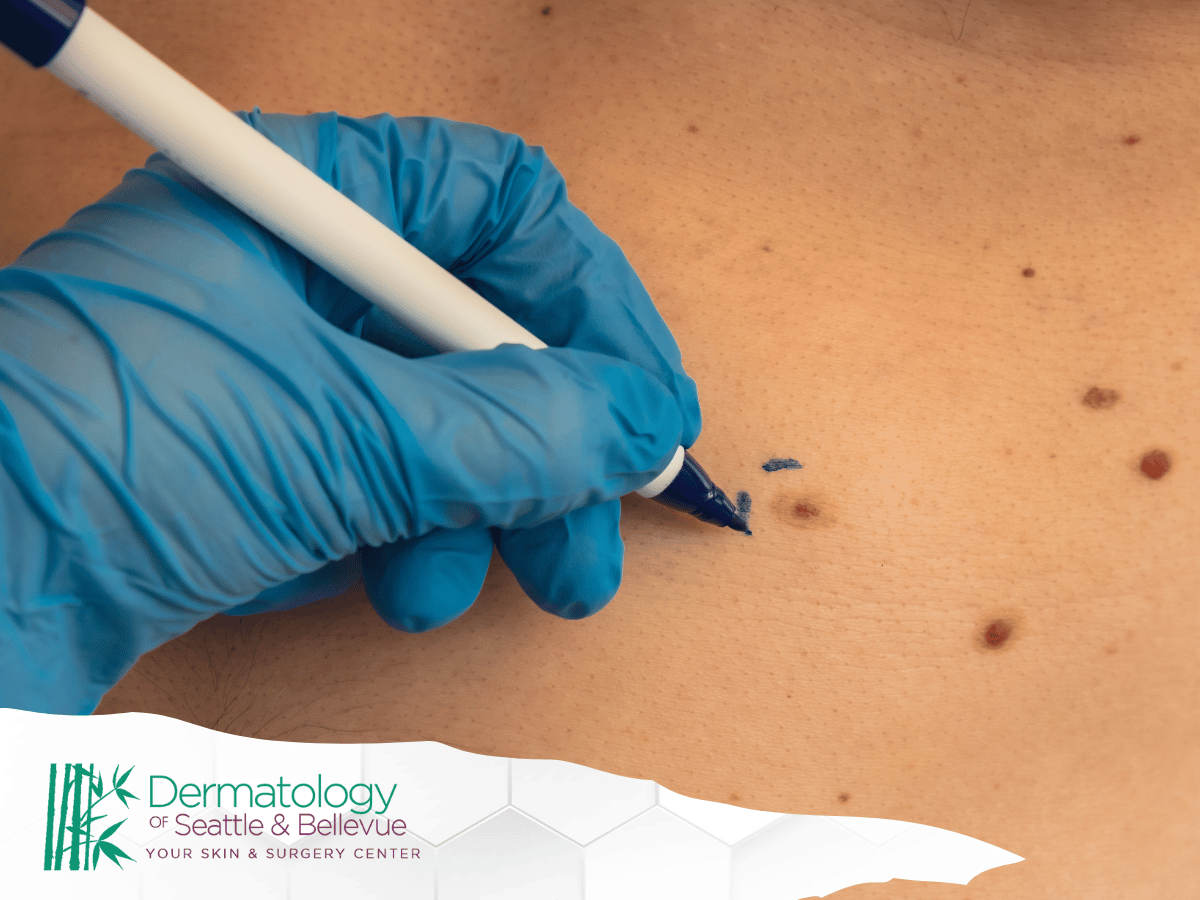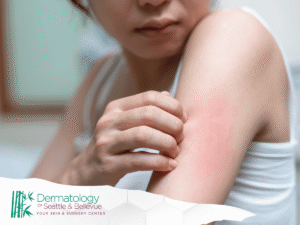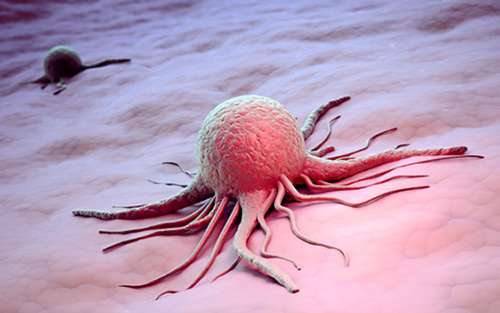Most skin tags are completely harmless—but in rare cases, what looks like a tag may actually be a cancerous growth. So, how can you tell the difference? Understanding the key traits of both can help you recognize when to get a professional evaluation. This article explores how to tell if a skin tag is actually a rare type of skin cancer, and offers guidance on when to be concerned, what to look for, and what steps to take next.
Although rare, cancerous skin tags may resemble typical tags in shape or color, making it difficult to spot the problem without a proper diagnosis. We’ll guide you through the red flags, symptoms, risk factors, and why early action matters.
Skin Tags vs. Skin Cancer
Skin tags are small, soft, typically painless growths that hang off the skin. They’re made up of collagen fibers and often develop in skin folds such as the neck, armpits, eyelids, groin, or under the breast area. These benign growths are usually flesh-toned and cause no pain unless irritated.
On the other hand, skin cancer may present as a new or changing spot, or even mimic the appearance of a tag at first glance. Melanoma, basal cell carcinoma, and other rare skin cancers can occasionally appear as raised or oddly shaped growths, especially on sun-exposed areas of the body.
Understanding the key differences
To distinguish a harmless skin tag from something more serious, look out for these features:
- Skin tags are soft, smooth, and typically the same color as your skin
- Cancerous growths may have uneven color, texture, or shape
- Tags do not bleed unless irritated—bleeding without cause could be a warning sign
- Rapid change in size, color, or surface texture could point to cancer
- Irritation, persistent itching, or infection may also signal a more serious issue
If you’re unsure, always consult a dermatologist to be safe.
Symptoms to Pay Attention to
Most skin tags remain unchanged for years, but any noticeable change should be evaluated. It’s easy to dismiss a small growth, especially in high-friction areas like the neck or underarms, but early symptoms of rare skin cancers can closely resemble common skin growths.
Being aware of how your skin normally looks—and acting on changes—is one of the best ways to detect cancerous growths early.
Knowing when to be concerned
You should consider seeing a doctor if a skin tag:
- Starts bleeding without any trauma
- Changes in color, especially to darker or uneven shades
- Develops a crusted or ulcerated surface
- Begins growing rapidly or becomes unusually firm
- Causes pain, discomfort, or irritation that doesn’t go away
These can be early signs of melanoma, basal cell, or other cancerous conditions. The earlier these symptoms are identified, the better your chances of a successful diagnosis and treatment.
Risk Factors Associated with Rare Skin Cancer
While anyone can develop skin cancer, certain risk factors can increase your likelihood of having a growth mistaken for a harmless skin tag. These factors don’t mean you’ll get cancer, but they do raise the importance of paying attention to unusual skin growths.
These risks are especially relevant if you have a history of sun exposure, medical conditions, or genetic predisposition to certain diseases that affect the skin.
Factors that may increase your risk
Several factors can increase your chances of developing a rare skin cancer that may initially resemble skin tags. Being aware of these can help you stay proactive about your health.
Key risk factors include:
- Prolonged or unprotected sun exposure, especially during childhood
- A personal or family history of skin cancer
- Age—older adults have a higher incidence of abnormal growths
- Certain medical conditions like insulin resistance, which may also lead to more skin tags
- Frequent irritation or trauma to the skin, especially in areas where tags develop
- Compromised immune systems due to illness or medications
If you fall into any of these categories, routine skin checks with a dermatologist are highly recommended.
The Importance of Early Detection
Early detection is one of the most important tools in the successful treatment of rare skin cancers. Many cancerous growths are treatable—sometimes even curable—when caught early. Unfortunately, if a cancerous skin tag is misidentified or ignored, it could delay crucial care.
Monitoring skin tags, moles, and other skin growths regularly increases the odds of catching something early and getting the proper diagnosis and removal when needed.
Why early detection is crucial
When cancer is detected at an early stage, treatment tends to be more effective, less invasive, and has a higher success rate. Delaying a visit to the dermatologist—especially when a growth is changing—can increase your risk of complications, especially with melanoma or aggressive basal cell carcinomas.
Time matters. That’s why even something as small as a skin tag that doesn’t behave “normally” should be checked out promptly.
Seeking Professional Evaluation
Even though most skin tags are harmless, a visual inspection alone isn’t always enough to rule out something more serious. If you notice any changes, discomfort, or have doubts about a growth, it’s time to get a professional opinion.
A board-certified dermatologist has the tools and expertise to distinguish between benign growths and potential cancerous conditions.
When to consult a dermatologist
See a dermatologist if your skin tag:
- Grows rapidly
- Changes in color, shape, or texture
- Appears in an unusual area
- Bleeds or becomes infected
- Feels firm or tender to the touch
Getting an expert opinion ensures an accurate diagnosis and, if necessary, a quick path to removal or further testing. Don’t wait until symptoms worsen—early action protects your long-term skin health.
Diagnostic Testing Procedures
If a doctor suspects that your skin tag might be something more serious, they may recommend further testing. These procedures are typically quick, minimally invasive, and offer a clearer understanding of what’s happening beneath the skin.
Testing is the only way to definitively rule out cancerous growths.
Procedures used to diagnose rare skin cancer
To determine whether a suspicious skin tag or growth is actually a form of skin cancer, a dermatologist may perform one or more of the following tests:
- Biopsy – A small tissue sample is removed and examined under a microscope to detect cancerous cells
- Dermatoscopy – A handheld tool is used to examine the surface of the skin under magnification
- Mole mapping or skin photography – Helps track growths over time, especially if you have many tags or moles
- Histopathologic review – A specialized analysis used to confirm the type of skin cancer if detected
These procedures are usually quick and can make the difference between peace of mind and catching a dangerous disease early.
Treatment Options Available
If testing confirms a cancerous skin tag or similar growth, prompt treatment will be recommended based on the type, size, and location of the lesion. The good news is that many skin cancers are highly treatable when addressed early.
Treatments range from minor in-office procedures to more advanced surgery or therapy, depending on how far the cancer has progressed.
Options for managing rare skin cancer
For rare or aggressive skin cancers, treatment may involve:
- Surgical excision – complete removal of the growth with clean margins
- Mohs surgery – especially useful for delicate areas like the face or eyelids
- Cryotherapy – freezing the lesion off with liquid nitrogen
- Topical chemotherapy creams – for surface-level skin cancers
- Radiation therapy – used for tumors that are difficult to operate on
Every case is unique, and your dermatology team will tailor your treatment plan to ensure the best outcome.
Potential Complications to Be Aware Of
If a cancerous skin tag is left untreated or misdiagnosed as harmless, the consequences can be serious. While many skin cancers grow slowly, others—like melanoma—can spread quickly to other parts of the body, including internal organs.
Even if the growth doesn’t seem threatening, ongoing irritation, bleeding, or changes in color or texture should never be ignored. Catching cancer early can dramatically reduce the risk of long-term health complications.
Understanding possible outcomes
Complications from untreated skin cancer may include:
- Local tissue damage and visible scarring
- Involvement of nearby lymph nodes
- Spread of the cancer to other parts of the body
- More invasive treatment methods needed later
What starts as a seemingly harmless skin tag can turn into a serious health issue if not properly monitored. That’s why vigilance and professional input matter.
Lifestyle Changes for Prevention
While not all skin cancers can be prevented, certain lifestyle changes can lower your risk and improve your overall skin health. These small shifts can help you maintain healthy skin and make it easier to notice when something isn’t quite right.
From minimizing sun exposure to maintaining a routine with your dermatologist, staying proactive can protect more than just your appearance—it can safeguard your long-term health.
Steps to reduce your risk
To support long-term skin health and reduce your risk of developing cancerous skin tags or similar growths, consider the following:
- Wear sunscreen daily, even on cloudy days or in winter
- Avoid prolonged sun exposure, especially during peak hours
- Stay away from tanning beds and artificial UV sources
- Perform regular skin checks at home, noting any changes in tags, moles, or spots
- Schedule annual visits with a dermatologist, especially if you have a family history of skin cancer
Taking these proactive steps won’t eliminate all risk, but they can significantly increase your chances of early detection and prevention.
Support Resources for Patients
Being told that a skin tag might be cancerous can be overwhelming, but you’re not alone. Many organizations offer trusted resources, emotional support, and practical guidance to help patients navigate the journey from diagnosis to treatment and recovery.
Whether you’re looking for financial help, peer groups, or educational material, these networks play a key role in the healing process.
Organizations and resources for guidance
Some helpful options include:
- The Skin Cancer Foundation – offers prevention tools and doctor directories
- American Academy of Dermatology – provides research-based info and treatment updates
- CancerCare – delivers free support groups and counseling for patients and families
- Local dermatology clinics – often host awareness events and patient education programs
Common Misconceptions About Skin Tags and Skin Cancer
Many people assume that skin tags are always harmless, or that they never turn into cancer. While this is usually true, some rare types of cancer may look like tags or benign growths at first glance.
It’s also a common myth that only sun-exposed skin is at risk. In truth, skin cancer can appear in shaded areas like the groin, armpits, and under skin folds—exactly where tags often grow.
Dispelling myths and addressing concerns
Understanding the difference between typical skin tags and potential warning signs is key. Don’t dismiss a changing or painful tag just because it’s small. If in doubt, let a professional take a closer look.
Seeking a Second Opinion
When it comes to your health, peace of mind matters. If your diagnosis feels unclear or you’re uncomfortable with the suggested plan, seeking a second opinion from another dermatologist can help clarify things.
When it may be beneficial to seek another professional perspective
Second opinions are especially helpful when:
- The growth is unusual in appearance or behavior
- You’ve had recurring skin tags that seem different
- A treatment recommendation feels overly aggressive or vague
- You want to confirm that the removal method is appropriate
Maintaining Skin Health Post-Diagnosis
After any diagnosis—benign or otherwise—staying on top of your skin care routine is key. This includes keeping your skin moisturized, protecting it from sun exposure, and continuing self-checks for new or changing tags, spots, or moles.
Tips for ongoing care
Regular dermatology checkups, especially if you’ve had skin cancer before, are essential. You’ll also want to monitor areas where tags were previously removed, as irritation or infection can recur.
Your Role in the Treatment Process
No one knows your body like you do. Staying informed, keeping track of symptoms, and voicing your concerns during appointments all contribute to effective treatment.
Ways to support your well-being and recovery
- Ask your doctor questions if anything feels unclear
- Follow post-treatment instructions carefully
- Maintain a consistent skin care routine
- Stay aware of how your skin and growths change over time








